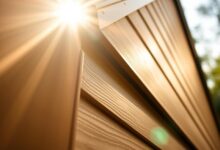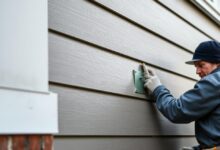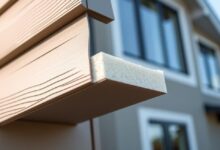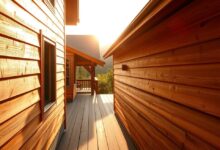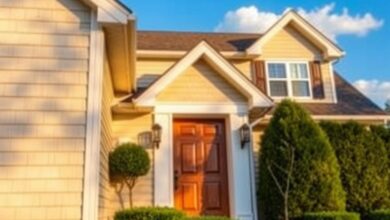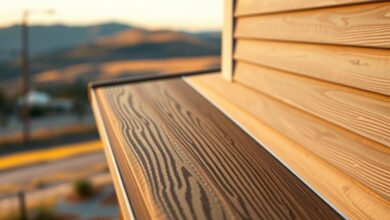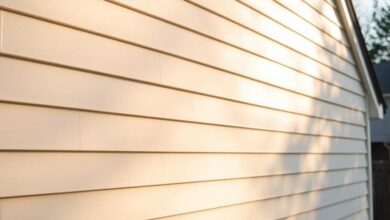Insulated Siding Prices: Average Cost per Sq Ft
Homeowners looking to improve their home often think about energy efficiency and looks. Insulated siding is a great choice. It makes your home look better and saves energy.
Knowing the average cost per square foot is key for planning your budget. The siding cost changes based on the material, where you live, and how hard it is to install.
When deciding on insulated siding, think about the long-term gains. You’ll save on energy bills and your home’s value will go up.
Key Takeaways
- Insulated siding offers both aesthetic and energy-saving benefits.
- The average cost per square foot varies based on material and installation factors.
- Understanding siding costs is key for homeowners’ budgeting.
- Long-term benefits include reduced energy bills and increased property value.
- Homeowners should consider multiple factors when choosing insulated siding.
What Is Insulated Siding?
Insulated siding is a modern exterior material that looks good and saves energy. It’s a big step up from old siding because it has insulation built right into it.
Definition and Construction
It’s made with layers, like a foam core in the middle. This foam is between an outer layer, like vinyl, and a backing. This setup helps keep your home warm or cool, saving energy.
Key Benefits and Features
Insulated siding boosts energy efficiency, lasts longer, and needs less upkeep than regular siding. It also comes in many styles and finishes. This lets homeowners pick the look they want without sacrificing performance.
Experts say insulated siding cuts down on energy use. It makes homes more eco-friendly. This shows how important energy-saving features are in building and fixing homes.
Popular Brands in the Market
Top brands for insulated siding include CertainTeed, Owens Corning, and James Hardie. These companies are known for their high-quality, energy-saving exterior finishes.
Insulated Siding Cost per Square Foot
Knowing the cost per square foot of insulated siding is key for homeowners planning a siding project. The price varies a lot based on the material and where you are in the US.
Vinyl Insulated Siding Prices
Vinyl insulated siding is popular for its toughness and saving energy. It costs between $1.50 and $3.50 per square foot. This price range changes based on quality, brand, and features.
Fiber Cement Insulated Siding Prices
Fiber cement insulated siding is a durable option. It costs between $3.00 and $6.00 per square foot. Its high price is because it lasts longer and stands up to the weather better.
Wood and Composite Insulated Siding Prices
Wood and composite siding are also options, with prices that vary a lot. Wood siding can cost from $4.00 to $10.00 per square foot. Composite materials might cost the same. These materials look great but cost more.
Regional Price Variations Across the US
Prices for insulated siding change a lot by region. Places with higher labor costs or strict building codes might charge more.
Things like local material availability, labor rates, and building rules affect prices. Homeowners should look up local prices to get a better idea for their project.
Understanding these factors and material costs helps homeowners plan their siding projects better. They can make smart choices about what to choose.
Factors That Influence Insulated Siding Prices
Many factors affect the cost of insulated siding. It’s important to understand these to plan for the expenses. This way, homeowners can better prepare for the costs.
Material Quality and R-Value
The material’s quality and R-value are key. R-value shows how well it insulates. Better insulation means higher costs, but it saves energy.
Vinyl insulated siding is often a good choice because it’s affordable and insulates well. On the other hand, fiber cement and composite siding are pricier but last longer and save more energy.
Home Size and Architectural Complexity
The size and design of your home matter too. Bigger homes need more siding, which costs more. Homes with complex designs also cost more because they require more work.
Removal of Existing Siding
Removing old siding adds to the cost. It includes labor and disposal fees. These costs vary based on the siding type and job complexity.
Seasonal Price Fluctuations
Prices can change with the seasons. Contractors might offer discounts in the off-season. Prices go up in peak season because of more demand.
Installation Costs and Considerations
Installing insulated siding has several cost factors to consider. The total cost can change based on whether you choose professional installation or DIY. Other factors also play a role.
Professional Installation Pricing
The cost of professional installation varies. It depends on location, job complexity, and the installer’s rates. On average, it costs between $4 to $10 per square foot. This includes labor and extra materials needed.
DIY Installation: Feasibility and Savings
Choosing DIY can save on labor costs. But, it’s important to know if you can do it right. Improper installation can cause energy efficiency issues. DIY costs range from $1 to $3 per square foot, based on materials and tools.
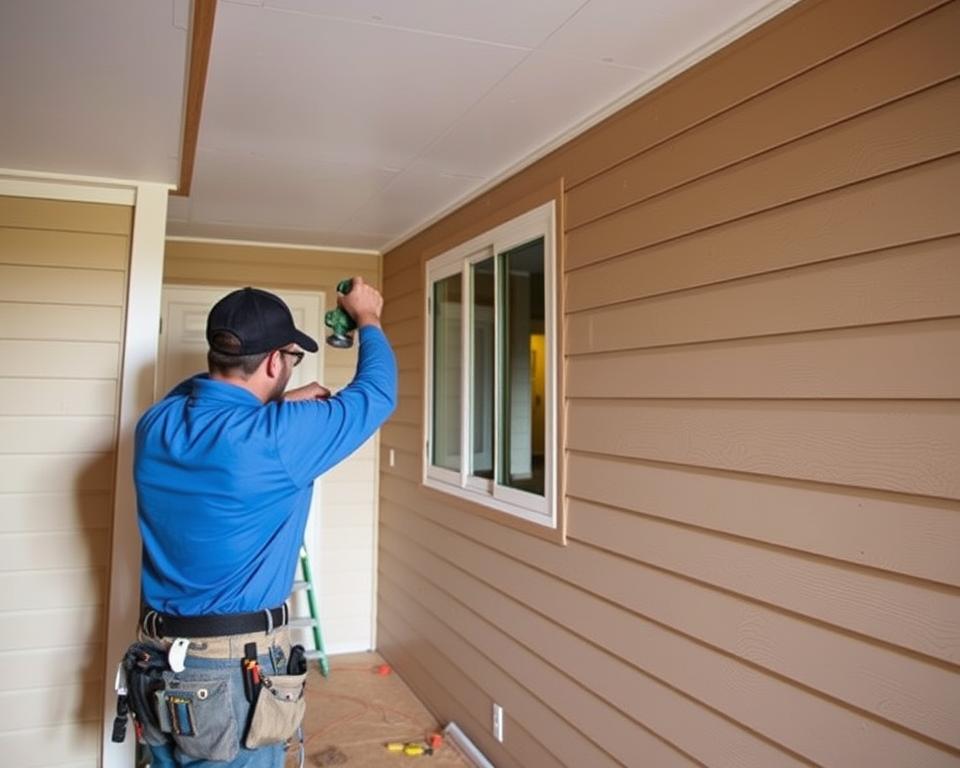
Additional Materials and Supplies
Other materials like flashing, sealants, and soffit and fascia boards may be needed. These add to the cost. They can cost between $500 to $2,000, depending on the project.
Permits and Inspection Fees
Don’t forget to budget for permits and inspections. Costs vary by location. They can be from $100 to $500 or more, based on local rules and project complexity.
Knowing these costs is key to planning your insulated siding project budget.
Long-Term Value and Savings
Insulated siding is a smart choice for homeowners. It offers many benefits that last long after it’s installed.
Energy Efficiency and Utility Savings
Insulated siding makes your home more energy-efficient. It keeps your home warm in winter and cool in summer. This can save you a lot on your energy bills.
The U.S. Department of Energy says you could save $200 to $500 a year. This is because it reduces heat loss and heat gain.
Maintenance Costs Compared to Traditional Siding
Insulated siding also means less maintenance. It’s built to withstand harsh weather, so you won’t need to fix it as often. Here’s a comparison of maintenance costs:
| Siding Type | Average Maintenance Cost per Year | Lifespan |
|---|---|---|
| Insulated Siding | $100-$300 | 30-50 years |
| Traditional Vinyl Siding | $200-$500 | 20-30 years |
| Wood Siding | $500-$1000 | 20-30 years |
Resale Value and ROI
Adding insulated siding can also boost your home’s value. Buyers love homes that save on energy. The National Association of Realtors says you could get back up to 80% of the cost when you sell.
Available Tax Credits and Rebates
Lastly, you might get tax credits or rebates for insulated siding. These can help cover the upfront costs. Always check with local and federal programs for what’s available.
Insulated Siding: A Complete Overview
Insulated siding is a great choice for those wanting to make their homes more energy-efficient and look better. The cost depends on the material, the size of your home, and where you live.
There are different types of insulated siding, like vinyl, fiber cement, and wood. Each has its own advantages and prices. Knowing this helps you choose wisely.
Insulated siding saves energy, cuts down on upkeep, and might even raise your home’s value. Think about these benefits when deciding if it’s worth the cost.
In short, insulated siding is a smart choice for homeowners. By looking at the cost and benefits, you can pick what’s best for you and your budget.
